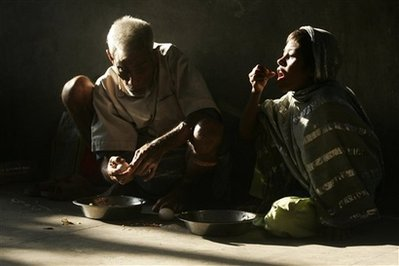A Christian aid agency that has been working in Niger since 1995 says the current food shortage in the West African country is the worst they’ve seen since the 2005 food crisis.
And what’s worse is that the annual “hunger season” began earlier than usual this year, threatening more than half of the country’s population.
“There aren’t many places in the world where you have an annual ‘hunger season,’ but Niger is one of them,” reported Judy Moore, the emergency response director in Niger for World Vision. “Unfortunately, this year, poor harvests and a lack of rainfall meant the hunger season began earlier than usual.”
According to a report last week by World Vision, one of the aid agency’s malnutrition screening centers in Koma Bangou identified 53 cases of severely acute malnutrition in a three-week period. In 2009, the same center identified just 22 cases in the entire year.
“This is the worst food shortage we’ve seen in Niger since 2005,” remarked Moore. “We’ve even heard reports of parents feeding their children ‘galgu,’ a plant normally used to feed cattle, because they can’t find anything else to eat.”
In partnership with the World Food Program, World Vision is distributing food in the Maradi and Tahou regions and has restocked 32 cereal banks with 320 metric tons of cereals to be sold at a subsidized price in seven of World Vision’s most affected program areas. These interventions are expected to increase food availability for more than 500,000 people.
World Vision is also partnering with the Food and Agricultural Organization to distribute seeds for the planting season to 10,000 households throughout Niger.
Last week, World Vision reported receiving a $1 million grant from the United States’ Office of Foreign Disaster Assistance to implement an emergency nutrition intervention in Niger.
The grant will fund treatment for nearly 28,000 malnourished children in the Maradi and Tilaberi regions of Niger over the course of one year.
Currently, 58 percent of Niger’s population is severely food insecure, and 1.5 million children under 5 are suffering from malnutrition.
According to reports, Niger’s ongoing food insecurity is a result of both a poor harvest because of last year’s erratic rainfall and the fact that much of the population lacks enough income to purchase food for their families. The cereal harvest has fallen by 30 percent and pasture, essential for livestock herders, has fallen by 60 percent.
The national survey conducted by Niger’s government last December reported that some 7.8 million people, or nearly 60 percent of Niger's population, are running out of food.
And according to a recently leaked government report, nearly three million people are expected to face "extreme" food shortfalls this year.
To fight hunger in Niger, the United Nations said in April that it needed $133 million more. At the time, it had only received $57 of its $190 million total funding request.
Last month, Caritas Internationalis said the Sahel region of West Africa, which Niger is part of, is heading for a humanitarian tragedy unless the international community responds to the mounting food crisis.
Though the lesson learned from the last major crisis in 2005 was that delays in aid cost lives, Raymond Yoro, secretary general of Caritas Niger, said donors have still been slow to provide funding despite the alarms raised in December 2009.
“It’s not too late to avert a tragedy,” Yoro reported.
Donors, however, “must immediately give the resources governments in the Sahel and aid agencies need,” he added.
Caritas Internationalis stated in its report that at least ten million people in the Sahel region face hunger, including the eight million people at risk in Niger – the worst hit country.
Only 47,000 metric tons of the 85,000 of food aid Niger requested had been committed at the time of the Catholic group’s report.
















